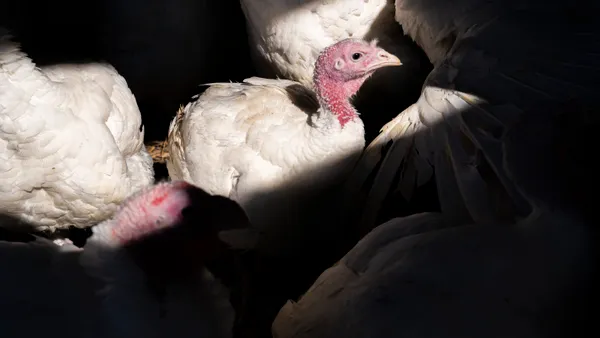Dive Brief:
-
Massive wildfires continue to burn through the Texas panhandle, devastating the region’s agriculture communities as agencies work to understand the full extent of the damage.
-
Hemphill County, one of the areas most affected, reported Friday that more than 1,000 cows died or went missing due to the fires, in addition to several horses, goats, and sheep. More losses are expected as full assessments are made, according to Texas Department of Agriculture Commissioner Sid Miller.
-
Cooler temperatures and less wind will aid in wildfire suppression efforts this week, however, there is a risk for more fires in certain parts of the state. The Smokehouse Creek Fire has torched more than 1 million acres so far and is only 15% contained as of Monday afternoon. “The nightmare is not over,” Miller said.
Dive Insight:
Still facing a hellish landscape from the largest wildfire in Texas history, farmers and ranchers across the panhandle are only just starting to assess their losses.
Shane Pennington, 56, of Canadian, Texas, is one of many agriculture producers devastated by the Smokehouse Creek Fire. In an interview with CNN, he said that he returned to his ranch to find about 50 cattle dead, with nursing cows desperately searching for their lost calves. The animals had severe injuries from the flames, which burned off some of their tails and rendered others blind.
“It just burned all the hair off them,” Pennington told the broadcast network. “Their feet are coming off their hooves, they’re bloody. It’s just hard to see them burn up.”
To assist farmers facing losses, state agencies and farm bureaus are working to collect public donations for emergency funds.
In addition to the immediate losses, there will be lasting agricultural effects. Farmers are having to consider euthanizing their herds due to injury or illness, CNN reported. They may have to cull their cows simply due to a lack of supplies. Hundreds of hay bales that would have been used for feed were burned in the flames.
The Texas Department of Agriculture called for donations to its relief fund, designed to reimburse farmers and ranchers up to 50% for rebuilding fences, operations, and other eligible expenses. Livestock and crop losses are not eligible for funds.
Texas Farm Bureau also created a fund to support farmers with unreimbursed agricultural losses. Typically, farmers can file for disaster relief aid at the federal level, but compensation usually doesn’t cover everything.
“Although we don’t know the full extent of the damage caused by the fires, we do know the losses will be staggering,” Texas Farm Bureau President Russell Boening said in a statement. “Farm Bureau is about helping our neighbors and agriculture, and this relief fund is set up to do just that.”
Texas is home to about 12 million cattle, according to the U.S. Department of Agriculture’s latest Cattle report. About 85% of the population is located in the panhandle region, concentrated on dairies and feedlots.
An official economic impact report from the wildfires won’t be available for weeks, a Texas A&M spokesperson said in an email Monday.











